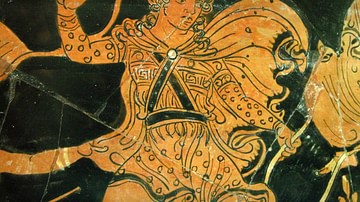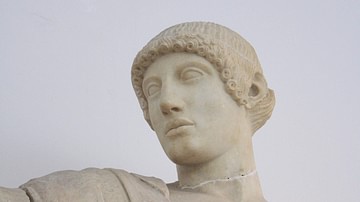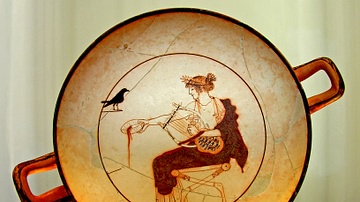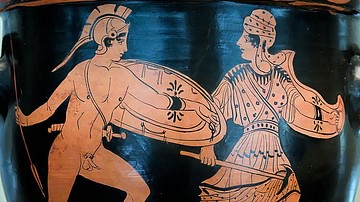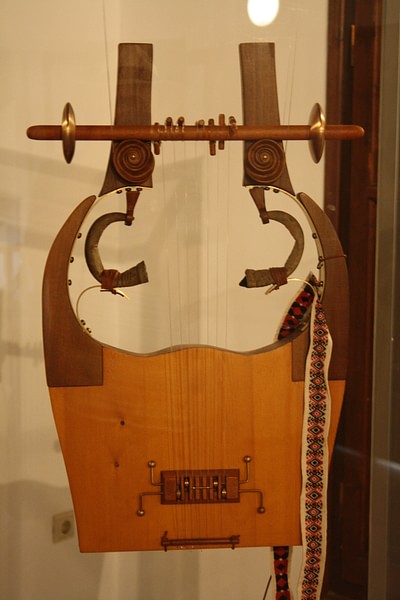
The Kithara (guitar) was a stringed musical instrument, related to the lyre, played by the ancient Greeks and closely associated with the god Apollo, although in mythology its invention is attributed to Hermes who manufactured the instrument from a tortoise shell (chelys). Musicians (kitharistu) needed great skill to play this difficult instrument, and it was usually played in self-accompaniment to a song (kitharodeia).
Performances of the kithara were usually the most popular in festivals and musical competitions such as the Delia, the great Ionian music festival held on Delos from the Archaic period. Playing of the kithara was also an important part of any young Greek male's all-round education.
The instrument is composed of a wooden sound box (echeion) with tail-piece (chordotonon), two flexible upper arms (pecheis) or horns (herata) joined by a horizontal tuning bar or bridge (zygos) with tuning pegs (kollopes) and it usually has seven strings, as opposed to the earlier phorminx, which had only five. The flexibility of the arms apparatus provides a 'wave' like sound, and the notes produced by the instrument are strong and deep. Played with the instrument in an upright position and resting in the lap or sometimes supported by a strap over the shoulder, two hands were used to pluck the strings simultaneously, usually with a plectrum of wood, ivory, or metal.
The instrument is often depicted in representations of the god Apollo on ancient Greek red- and black-figure pottery and in sculpture. The kithara was also a popular motif on coins throughout the Classical and Hellenistic periods. Delos, with its close association with Apollo, used the kithara on its coins, one of the earliest being the silver didrachm from the 6th century BCE. Further examples include the silver tetrobol of the Koinon (League) of Chalkideans (4th century BCE), the silver drachma of Kolophon (389-350 BCE), and the coins from many Lycian cities and Kos (166-88 BCE). In the Roman period, Lycian coins depicting Augustus and Trajan were often backed with a kithara design.
